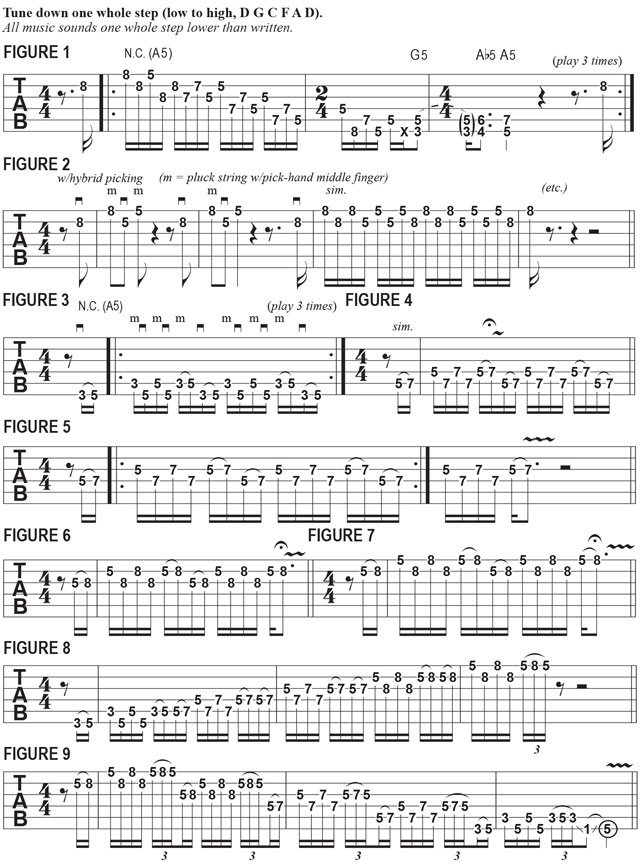Using Country-Style “Chicken Pickin’” in Metal
How to incorporate “Chicken Pickin’” into your metal-style solos.

One of my favorite sounds on the electric guitar is what’s known as “chicken pickin’,” which refers to a very distinct country-style picking approach that many of my favorite virtuoso country players have made great use of, such as Danny Gatton, Albert Lee, Chet Atkins and many others.
I’ve worked on different approaches to chicken pickin’ techniques for years, and I love to incorporate this distinct sound into metal-style solos.
The way chicken pickin’ is usually executed is by using hybrid picking, wherein one alternates between notes picked with a downstroke in a conventional manner and notes that are fingerpicked.
When one fingerpicks, the finger comes up from underneath the string in order to attack it, so, in this way, the fingerpick serves as an upstroke. The upstroke is executed in an aggressive manner, snapping the string against the fretboard, which creates a “cluck” type sound, thus the name chicken pickin’. When chicken pickin’, I will often address pairs of adjacent strings at any given moment, starting with a downstroke with the pick on the lower string, followed by an upstroke of the fingerpick on the adjacent higher string.
FIGURE 1 is based on the A blues scale (A C D Eb E), and I begin on the top two strings, sounding the second string with a picked downsroke, followed by a note on the first string picked with my middle finger. Both notes are fretted at the eighth fret, so I use my fret-hand pinkie to fret both of these notes, “rolling” it from the lower to the higher string.
As the lick progresses, you’ll see that I incorporate this rolling technique across each pair of adjacent strings at the same fret until I get to the bottom pair of strings, wherein I need to fret the sixth string one fret higher than the fifth. Pairs of notes on adjacent strings are sounded at the eighth, seventh and fifth frets, so I use my pinkie, ring finger and index finger to fret these string pairs, respectively. FIGURE 1 ends with ascending two-note power chords on the bottom two strings.
The best way to get this technique under your fingers is to begin on a single pair of strings, as shown in FIGURE 2. Once you feel comfortable playing this way, gradually increase the tempo until you’re playing the line as quickly as possible.
Another approach is to add double hammer-ons to the phrases, as demonstrated in FIGURE 3: I begin on the bottom two strings with the same technique as shown in FIGURE 1, followed by a pair of hammer-ons on both strings. The idea is then moved up across each higher pair of strings in FIGURES 4–7. In FIGURE 8, each of the two-string pairs has been linked together into a longer phrase that moves across all six strings, ending with a quick hammer/pull on the high E.
Lastly, we can incorporate that hammer/pull into our chicken pickin’ phrase as we descend across each string pair, as depicted in FIGURE 9. Now that you have the concept down, try to invent your own “chicken picked” licks.

Get The Pick Newsletter
All the latest guitar news, interviews, lessons, reviews, deals and more, direct to your inbox!









